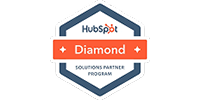What Does The Optimal Sales Tech Stack Look Like?
Did you know that sales reps spend 65% of their time on non-selling activities? It's more important now than ever to have the right tools at your disposal to ensure your reps are able to spend the most time selling possible. However, it is also critical to draw the distinction between “nice-to-have” and “need-to-haves.” When evaluating sales tools, you must look at whether that tool solves a particular challenge for your team. Too many organizations pay for tools that are either not used or actually complicate salespeople’s lives.
Our sales operations team has seen tech stacks of all varieties. Although firms often don't like to hear it, there isn't such a thing as a one-size-fits-all, optimal sales tech stack. The ideal sales stack for your firm is dependent on a variety of factors, with the most important being how your sales reps are spending their time. However, there are still a few key technologies and tools that we find helpful, and that have a wide range of use cases. Let's break them down.
A Powerful CRM
A strong CRM is the lifeblood of any successful sales program. Housing everything from contacts and company records to email sending and drafting capabilities, a great CRM is an absolute-must for sales teams of all sizes to properly manage information and ensure efficiency. Your CRM should be the central hub that your team operates out of, and should serve as the universal source of truth. If it’s not in the CRM, it didn’t happen.
Many CRMs like Hubspot and Salesforce continually upgrade their product offerings, adding capabilities like the ability to send quotes or book meetings directly on a calendar, which can carry a hefty price tag if purchased as independent software. Beyond price, this also requires your reps to need to learn how to use more platforms, which can cut into productivity. While you may initially be interested in purchasing the lowest cost CRM, opting instead for a robust system will ultimately lead to cost savings down the road in the form of productivity and ancillary features.
Conversation Intelligence
A conversation intelligence tool like Chorus can provide a tremendous boost for sales teams of all sizes. Conversation intelligence tools record sales conversations in order to allow sales reps and managers to listen back and improve selling techniques through conversation analysis. This software is particularly effective from a training perspective, allowing reps to learn quickly from their mistakes. You can even build folders of certain types of calls and use that material for onboarding and training.
Beyond the tactical benefits that conversational intelligence software provides, it is also a powerful strategic tool by providing sales leaders with a higher degree of visibility and analytics. Through artificial intelligence, the software can recognize patterns within your calls and determine what factors are influencing deals and driving outcomes. Your sales managers can analyze these patterns to make strategic shifts, such as pivoting targeting, messaging, or adjusting sales funnels.
Sales Engagement
The average B2B buyer engages after 8 attempts, while the average B2B seller gives up after 6. A good cadence often consists of as many as 12 steps, and an automation tool will be key to any organization looking to execute sales outreach at scale. Tools like HubSpot and SalesLoft enable sales reps to build complex sales cadences and enroll hundreds and thousands of prospects into sequences. It’s all about helping your reps spend more time selling and less time on admin tasks. That time saving should translate into higher success rates.
Contact Database
Many organizations ask reps to source their own leads. That means reps are spending multiple hours every day and week simply researching contacts and trying to track down their email and phone numbers. Contact databases like ZoomInfo and Cognism are key to providing your sales reps with updated contact information that they can pursue, saving valuable time.
Beyond time savings for your reps, databases provide you with the ability to be more intentional about who you are targeting. You can easily pull lists of target accounts or target industries, thereby arming your team with high-quality contacts that represent strong business opportunities for your organization.
Additional Tools
Although we’ve covered the primary components of an optimal tech stack, there are additional tools that can be helpful for sales teams, but aren’t “need-to-haves” in many cases. For instance, if you have a high volume of inbound leads, investing in a tool like Calendly is likely worthwhile to streamline your meeting booking process. ESignature tools can also be helpful for signing contracts quickly and efficiently, entirely online. A Learning Management System like Lessonly can be valuable for teams that prioritize training and continuous learning (and your team probably should be). Ensuring that your team is always learning and growing is a massive priority amongst the best sales teams, and an LMS is a great way to promote that practice. Again, these tools aren’t absolute musts for most sales teams, but they can certainly be useful tools that boost productivity and performance if they fit comfortably into your budget and are used properly.
* * *
Are you struggling to determine what the technology stack for your sales team should look like? The FullFunnel team can help. From HubSpot consulting to sales training expertise, our team can provide your firm with unparalleled guidance to take your firm to the next level. Request a Consultation today to learn more.











